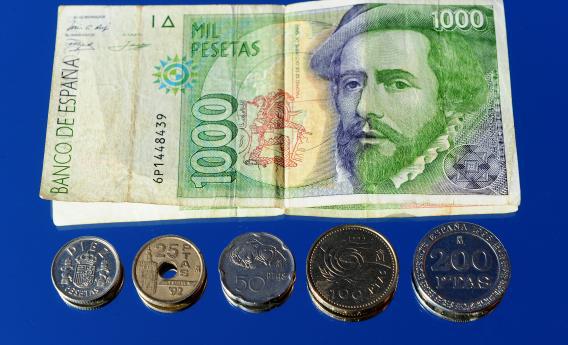Reader BS writes:
The worry about countries exiting the euro is massive financial panic, as depositors who don’t want their euros to turn into drachma, lira, or pesata, pull their deposits from Greek, Italian, or Spanish banks to German ones.
So why can’t the governments introduce new national currencies *alongside* the euro to avoid the financial panic? Spain could re-introduce the pesata, create demand for it by mandating that taxes be paid in pesata, not euros, and allow the euro/pesata exchange rate to float freely.
The logistics of this get a bit complicated. Spain owes debts denominated in euros and so does the Spanish private sector. So the Spanish state would need to continue demanding that a share of taxes be paid in euros (in order to finance Spanish debt) but could allow taxes to be partially paid in pesetas and could also partially convert expenditures to pesetas. So pensioners, public employees, transfer recipients, etc. would get 20 percent of their money in pesetas and 15 percent of Spanish taxes would be redominated into pesetas. That’s a form of simultaneous fiscal contraction and monetary expansion that’s appropriate for a country like Spain with a depressed economy and debts denominated in a foreign currency.
The problem in terms of the euro is that this doesn’t really resolve the bank run problem. Dipping Spain’s toes into the waters of reintroducing a national currency only further undermines confidence in the proposition that a €1,000 bank account in Spain is equal in value to a €1,000 bank account in Germany. A local economy of cash and pesetas should keep functioning, but Spanish banks will keep getting “jogged” out of existence.
